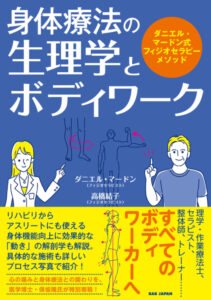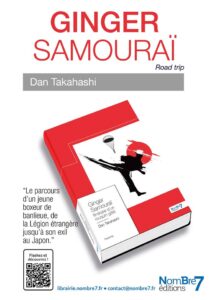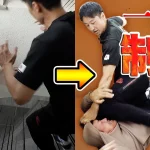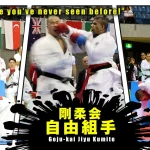【Exploring the spirit of the Ryukyu】Series 13 (HIDEN 05/2024)「TSUNEO SHIMABUKURO SENSEI」
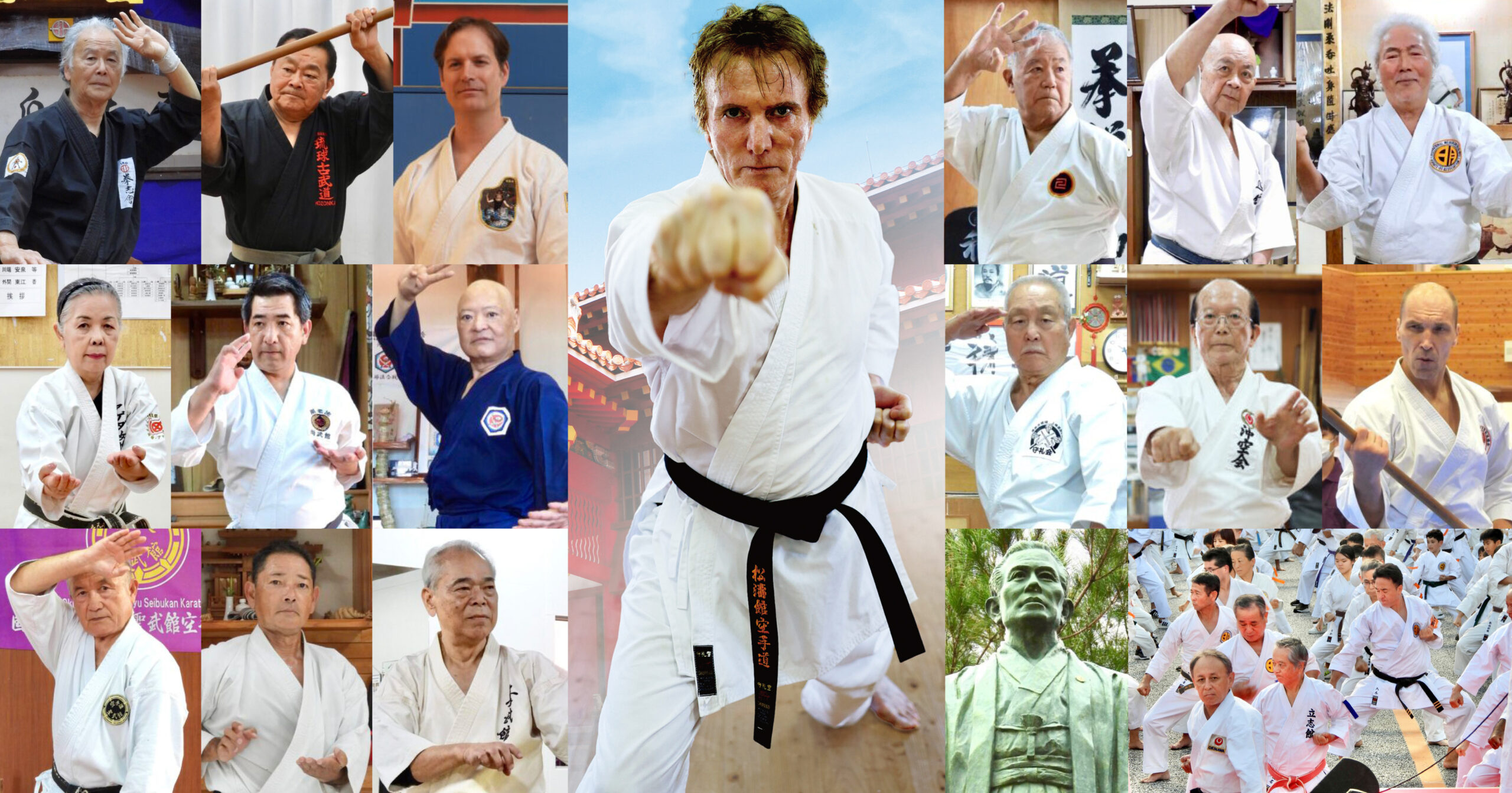
【Exploring the spirit of the Ryukyu】Series 13 (Translated from “HIDEN” May 2024)「TSUNEO SHIMABUKURO SENSEI」
Interview/text: Daniel Mardon
Photography/Translation ◎Yuko Takahashi
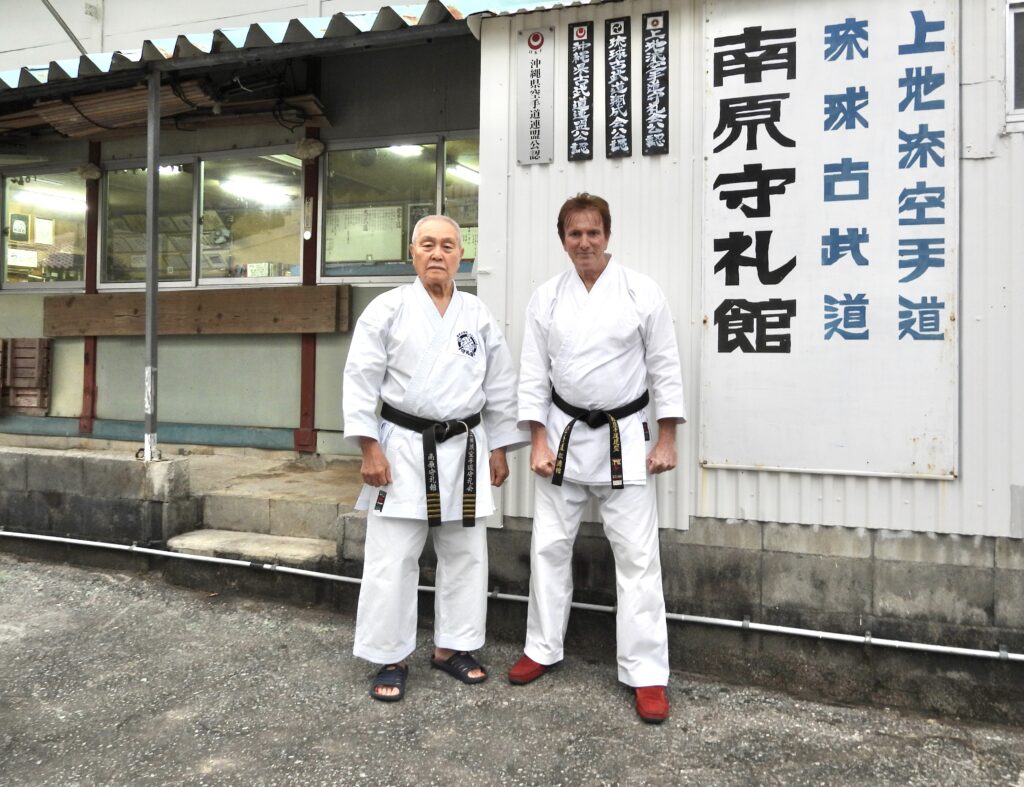
Minamibara Shureikan is located in the historic Haebaru area, at the bottom of Katsuren Castle, a world heritage site. Tsuneo Shimabukuro Sensei (left) and Daniel Sensei (right).

The side street of the Dojo in Haebaru village.

View of Katsuren castle from the end of the street.
The Shureikai Minamihara Shureikan was from the beginning on our top list to visit. It features another Okinawa Karate living legend; Shimabukuro Tsuneo 10th Dan Uechi-Ryu & 10th Dan Okinawa Kobudo. President of the Okinawa Kobudo federation, he also is a member of the Committee for the Okinawa Karate UNESCO.
This famous traditional Dojo, built in 1996, is situated in the small Minami Haebaru village, right under Katsuren Gusuku (medieval castle).
Since we are living in Okinawa, our interviews are never done in a single day, but within several days and this interview promises again to be rich in technical and historical information.
Originally, Shimabukuro Sensei was a high-school sport teacher. This is why he has a lot of interest and passion for biomechanics…
Easy access from many surrounding cities, this lovely countryside Dojo is bigger than I expected. It has a traditional wooden-floor and is equipped with many racks of neatly arranged Kobudo weapons. With a view of the medieval stone castle, it has everything to make a dream reality for an Occidental Karateka like me.
Shimabukuro Sensei is meeting us at the door with a smile in an immaculate Karate-Gi with a black belt striped with 5 bars. Contrarily to Europe or America, it does not mean 5 Dan, but 10 Dan here in Okinawa…
When Shimabukuro Sensei was a physical education teacher at Konan High School, he led his students to “Koshien”* six times and he was the official advisor for the baseball team. That is why I am looking forward to talking about karate and biomechanics today.
*Note: What is “Koshien”
The “All Japan High School Baseball Championship Tournament” began in 1915. The top selected schools from each prefecture must have won over 3,500 local tournaments. Then, they are invited to compete at the main tournament, which takes place at the famous “Hanshin Koshien Stadium” in Hyogo Prefecture. For high school baseball players, it is a dream to compete at the “Koshien”.
In the 15th century, Katsuren Castle, situated on the Yokatsu Peninsula, was the castle of Amawari, a feudal lord who brought prosperity to Katsuren through overseas trade. Unfortunately, Amawari was defeated by the Ryukyu royal army in 1458.
The castle, which had been ruled by ten generations of Lords, was abandoned and the people who were farming at its bottom later moved to Haebaru, where the Dojo is located.
In 2026 this village will celebrate its 300th anniversary.
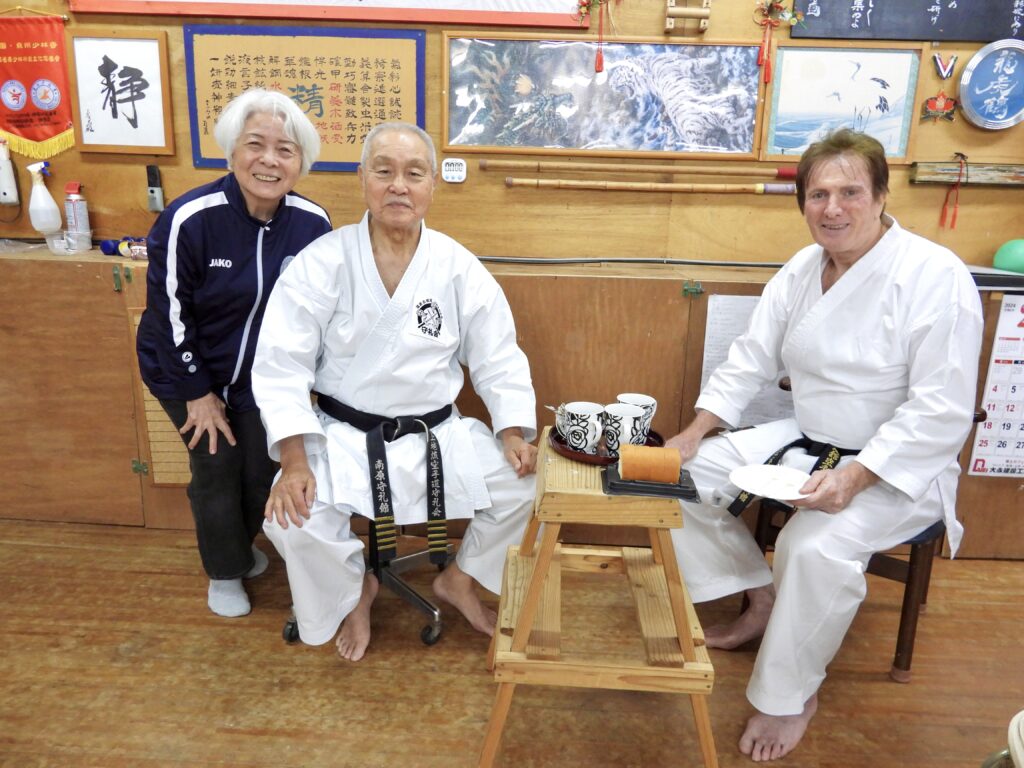
Conversation about Karate, ancient Martial Arts, body, therapies, and so on. Daniel Sensei enjoys coffee and cake from Shimabukuro Sensei’s wife, Mitsuko-san (left).

Hospitality with a great dinner at the Dojo. Arigato gozaimasu!

Opening & closing are done with a formal Seiza.
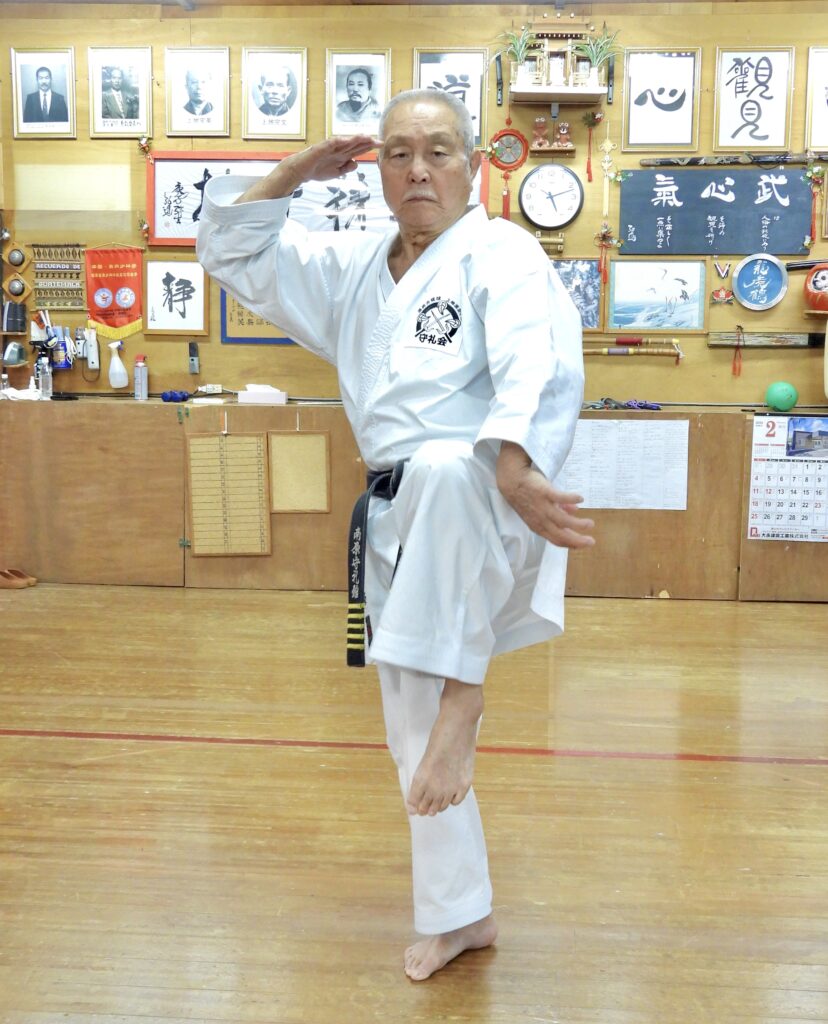
BIOGRAPHY
Shimabukuro Tsuneo, Karate/Kobudo Hanshi 10th Dan.
Minamihara Shureikan Chief Instructor.
Chairman of the Okinawa Prefecture Kobudo Federation.
Chairman of the Okinawa Prefecture Uechi-ryu Karate Federation.
Chairman of the Ryukyu Kobudo Shoseikai International Federation.
Chairman of Shureikai (Uechi-ryu Karate-do, Ryukyu Kobudo).
Born in 1945 in Uruma City, Okinawa Prefecture (same location where Dojo is currently located).
1999, All Japan Teachers Karatedo Tournament, won the Kata division and 3rd place in the Kumite division.
2000, won the Kata category at the All Japan Karate Tournament.
2015, awarded 10th Dan rank Karate Hanshi and 10th Dan rank Kobudo Hanshi (certified by Maeshiro Shusei Sensei, Supreme Advisor of Uechi-ryu Karatedo Shureikai/Ryukyu Kobudo Shoseikai Technical Skills Supreme Teacher). In the same year also certified as Kobudo Hanshi 10th Dan by the Okinawa Prefecture Kobudo Federation and Masahiro Nakamoto Sensei (Okinawa Prefecture Intangible Cultural Property Karate Kobujutsu Holder).
2018 Certified by the Okinawa Prefecture Uechi-Ryu Karatedo Federation as a 10th Dan Karatedo Hanshi.
2019 Member of the Okinawa Karate UNESCO Registration Promotion Committee.
(1-) How did you start karate?
I was born and raised here in Haebaru. This village was very active and children and adolescents used to practice a large variety of sports on the elementary school-yard in the evening.
When I was 14 years old, a local “Sempai” from a high school Karate club, decided to teach Karate on that playground. 12 people, including myself, started to practice every day.
It was so much fun that when I got home from school, I threw my school bag and ran to practice.
The Sempai graduated from school and started to work, so our training had to end.
However, I couldn’t never forget Karate and I joined the “Uechi-Ryu Koza Shubukan” at the age of 21.
I was very impressed by the greatness of Yonamine Kousuke Sensei. His “Enbu” (Kata-performances), made me sign up to his Dojo.
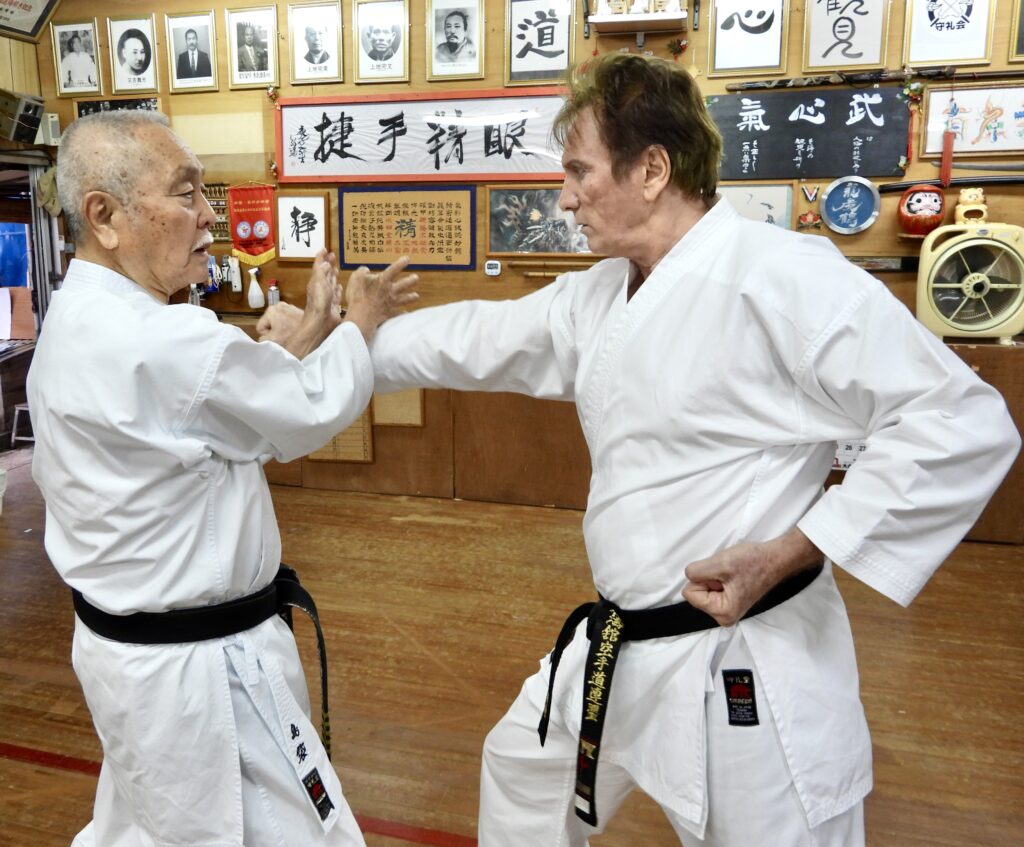
Shimabukuro Sensei performs “Hirate Mawashi Uke” in response to a tsuki from Daniel Sensei.
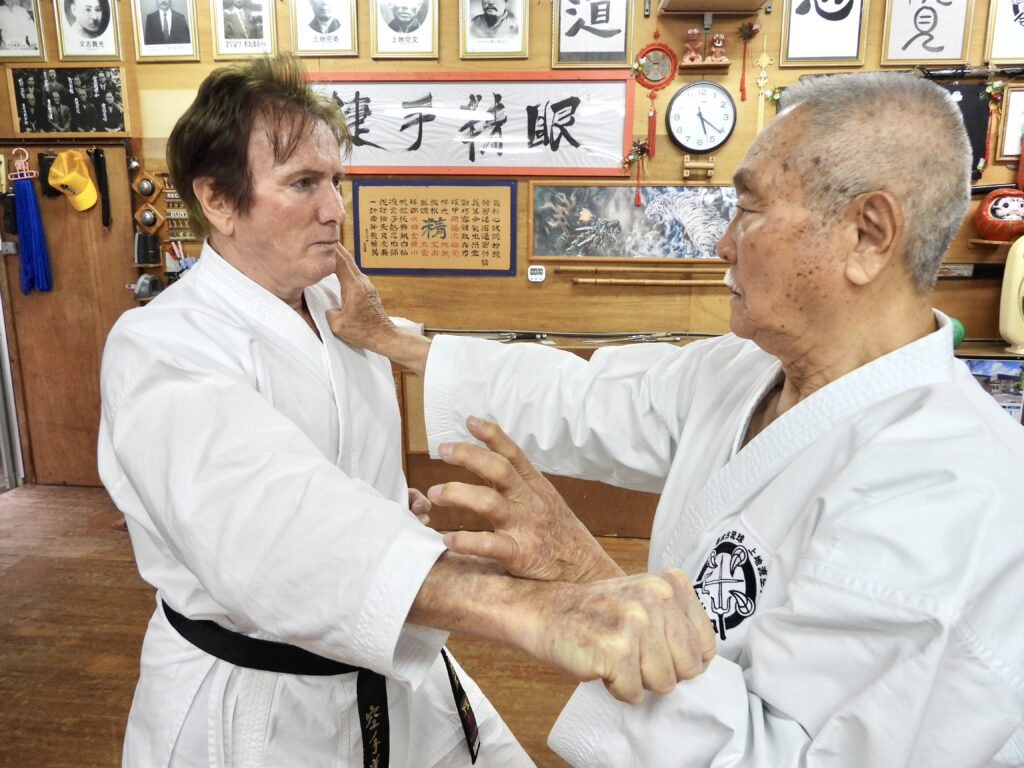
Shimabukuro Sensei blocks a tsuki with his left hand in “Hirate Mawashi Uke” and counter-attacks with a “Boshiken” in the chin with his right hand.
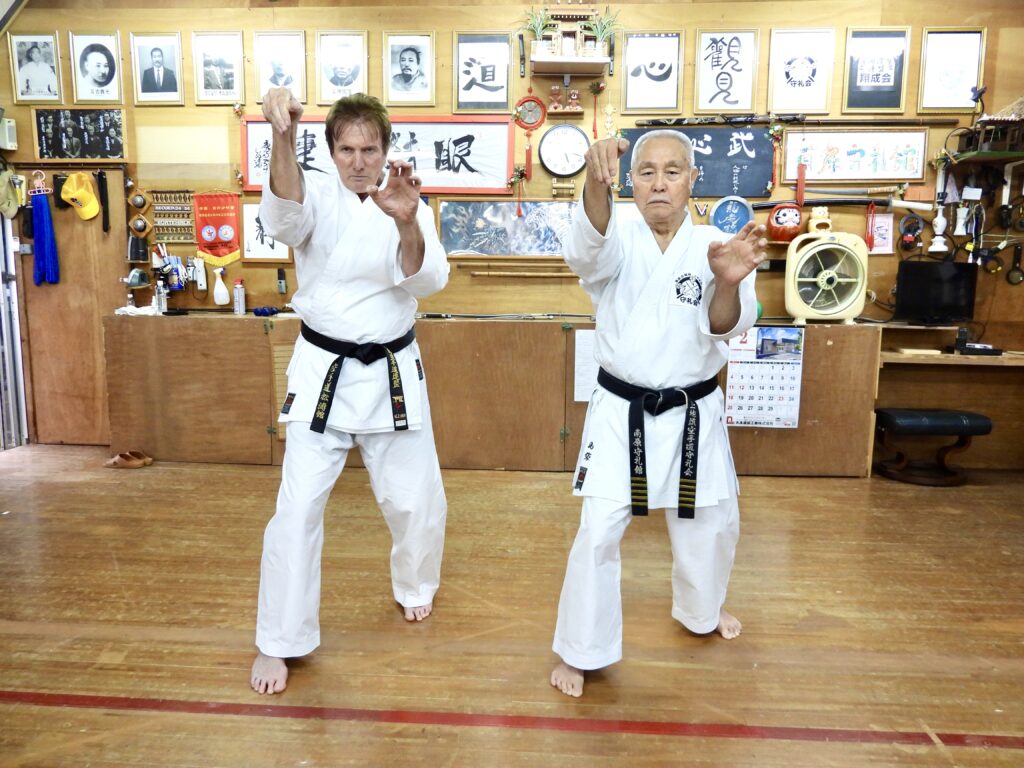
Uechi-ryu Sanseryu’s Kata “Kakushiken” stance.
(2-) What are the characteristics of your school (Dojo)?
The sharpness of our punches and kicks that comes from Shizentai自然体 (natural body stance*), our unique postures, the way we lower our hips, how we block or dodge with circular movements (輪受けWa-uke), and how we block the opponent’s kick with the feet. Also, I often punch with a “Shouken” (小拳) or kick with a “Sokusen geri” (足先蹴り).
We use a lot of Shukouken 手甲拳 (wrist strike) and Boshiken 母指拳 (Thumb-fist).
It is important to say that in the past, “Tsuki” 突き was named ”Nuki” 抜き. “Tsuki” means to hit/punch while “Nuki” means to penetrate (pierce). “Shouken” was also originally “Nuki”.
Note*: Shizentai自然体 applied to Karate refers to basic postures which consist of standing naturally without preparing for an attack or a defense and without any embellishment. Nowadays, the word Shizentai is trendy and used in many conversations to express things like “Be yourself”, “Just the way you are”, etc…

Shimabukuro Sensei’s hand-made and unique Karate & Kobudo Makiwara.
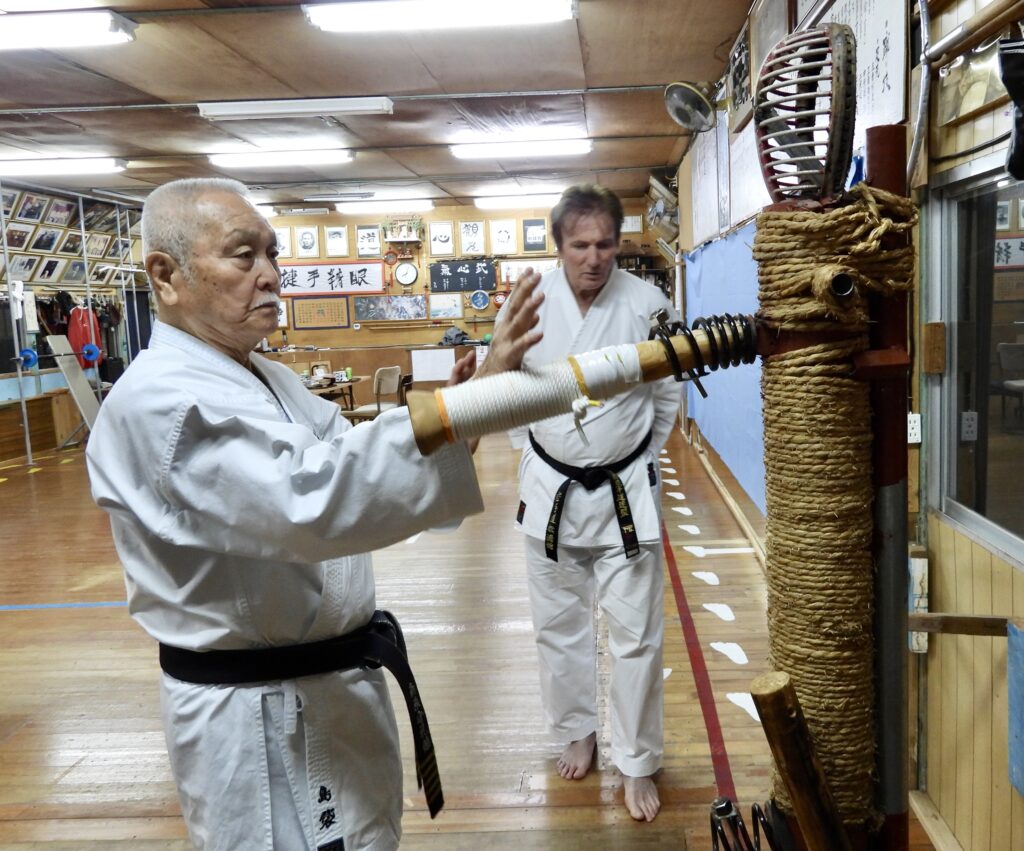
Shimabukuro Sensei uses a “bomakiwara” of his conception and trains here his Hirate Mawashi Uke.
(3-) What is your favorite Waza and Kata?
To attack the face or knock down from “Soete hirate mawashi uke” (Both hands circular block). Also, dropping the arms of an opponent who is holding a strong guard.
My favorite Kata is “Sanseiryu 三十六”.
(4-) What is your most impressive memory of your Sensei/(Shisho)?
My first Sensei was Yonamine Kosuke Sensei, who I mentioned earlier. At 28, for professional reasons I needed to move. I then entered the “Uechi-ryu Aja Shubukan Dojo” of Maeshiro Shusei Sensei. Maeshiro Sensei is now 91 years old and is still my Shisho to this day.
When Maeshiro Sensei demonstrates a Bunkai it is close to a real fight.
During a seminar in France, my Shisho and I had a meeting to discuss how we will demonstrate the Bunkai. Instead of talking, he demonstrated it directly on me, hitting me very hard and I was very surprised. When we returned to the hotel and took a bath, Sensei was very worried when he saw that my arm was very red and swollen. I told him “This is the result of your Tsuki and Keri during today’s repetition!” Sensei laughed out loud with joy. It’s a precious memory.
Also, Maeshiro Sensei always said; “When you do Kata, don’t copy me!” At first, it was difficult to understand what it meant, but I got it.
Once, I went to study “Reisho-style” calligraphy at a Chinese university. In fact, the teacher also told me the same; “Don’t become a copy of me! If you look at a model and write it, you will be able to write it exactly as written, but if you copy it, it will be completely meaningless…”
All Sensei end up old and lose their muscle strength. I learned Karate with Maeshiro Sensei when he was still young, but for those who discovered him when he was in his 70’s, they may find that my technique is different from what they have experienced with him. However, even if “Shosa” 所作 (movements) can appear different, I would like people to see what transpires behind them and realize that they remain the same.
I now understand that Maeshiro Sensei’s teachings are about; “Work hard every day to surpass yourself!”. Also; “Be able to perform Kata that makes sense and can be explained and can fit perfectly with logic and reason”.
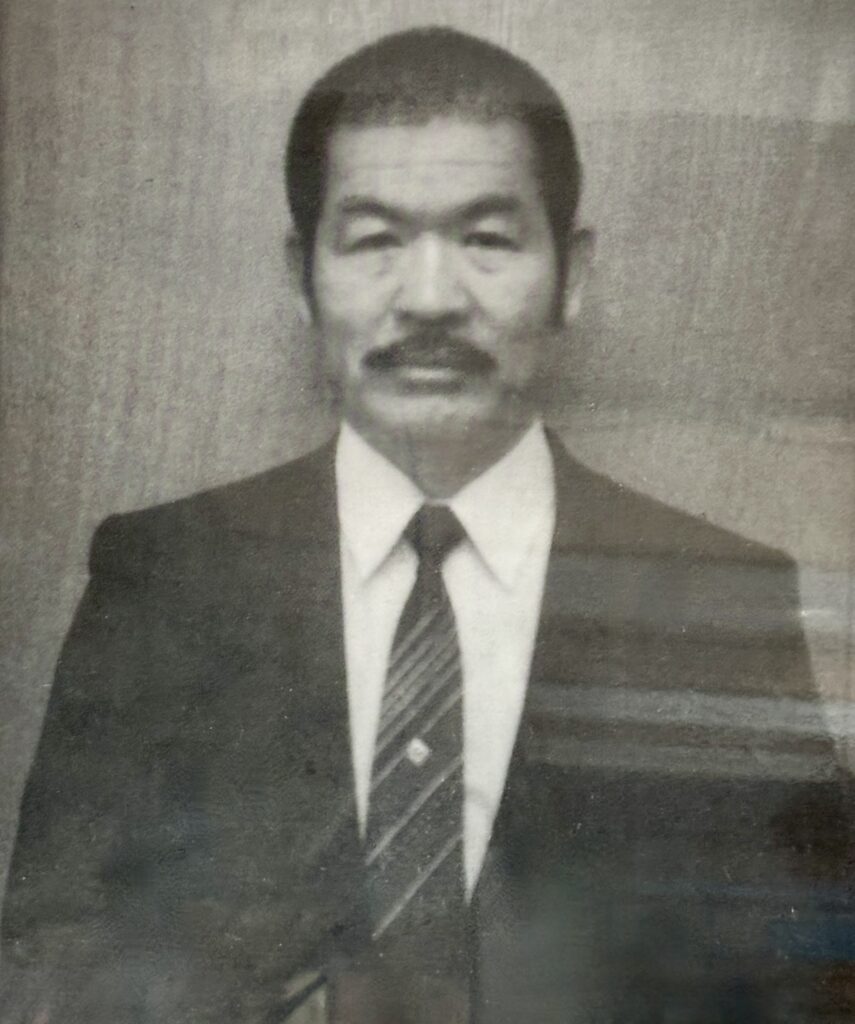
Shimabukuro Sensei’s Shisho and Shureikai Supreme Advisor Maeshiro Shusei Sensei (circa 2001).
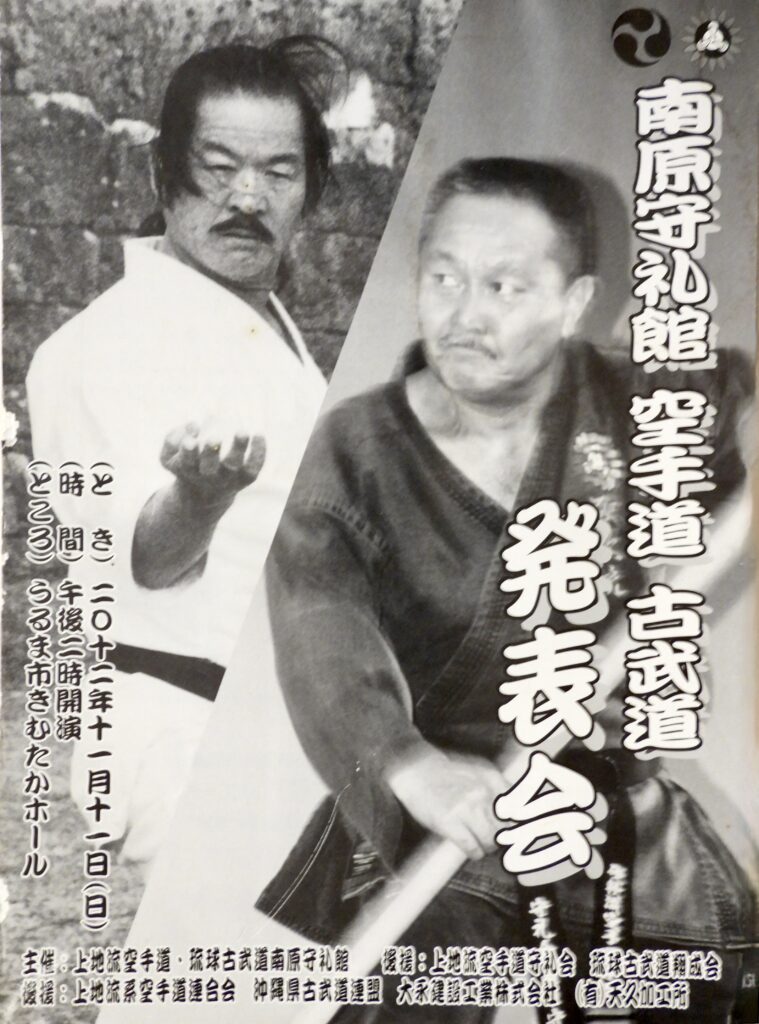
Poster for Minamihara Shureikan’s karate/kobudo presentation (2012). Maeshiro Sensei (left), Shimabukuro Sensei (right)
(5-) What is the difference between Okinawa Karate and mainland Karate?
Traditional Okinawan techniques focus on one movement without overdoing or exaggerating, whereas mainland Karate tends to use fancy movements. Kiai 気合 are especially long and loud to impress the referee, because it is a competitive sport.
Originally, Kiai is something you put into yourself. There are senior teachers in Okinawa who say, “No need for Kiai, not even once!” Karate is a martial art, not a spectacle.
── What is Kime 極め ?
The noun Kime (極め) has for primary meaning “End”… It is connected to the verb Kiwameru (極める), which means “to reach a final point”. In Karate we say:
-“Ichigeki de Kimeru!”- This means “ending with a single blow!”
[1st Note from Daniel:This verb Kimeru 極める has the same Kanji as Kiwameru 極める and has a similar signification. This Kanji alone (極) literally means “the point beyond which something cannot exist” or “the very end”. ]
Grabbing someone’s arm with the intention to block the opponent, is also called Kimeru (極める).
Nowadays with competition, people refer to “Kime” as being a static pose. I’m not saying that mastering these freezing poses is bad, but it is far from Dento Karate 伝統空手 (traditional Karate). As I said before Traditional Okinawan techniques focus on one movement without overdoing or exaggerating.
[2nd Note from Daniel:
I always warn that the Japanese language is extremely difficult and that Karate lingo is very confusing for non-Japanese who cannot read Kanji. Many go by an often orally misinterpreted pronunciation and by a vague “Romaji” (Roman alphabet) transcription. This has given way to many seriously implanted mistakes.
Another interpretation exists for the verb Kimeru (極める) with the very same spelling as the one Shimabukuro Sensei describes in the expression “Ichigeki de Kimeru!”. In this case, it can be translated by “holding a position”. This is the choice that was made by “sport-Karate” and that Shimabukuro Sensei is talking about….
Sometimes we have people mistaking this verb with another “Kimeru” which has a totally different Kanji (決める) and which means; “to make a decision”. Also, the noun “Kiwame” (極め) is spelled exactly like “Kime” (極め) and signifies “mastery” and “pinnacle”…]
(6-) Do you often teach to foreigners?
We have foreigners “Deshi”, who are living in Okinawa and attend our classes. We also have branches in Italy and Germany, where we also offer seminars and individual guidance. Recently, a student from Italy came to this Dojo and we practiced together.
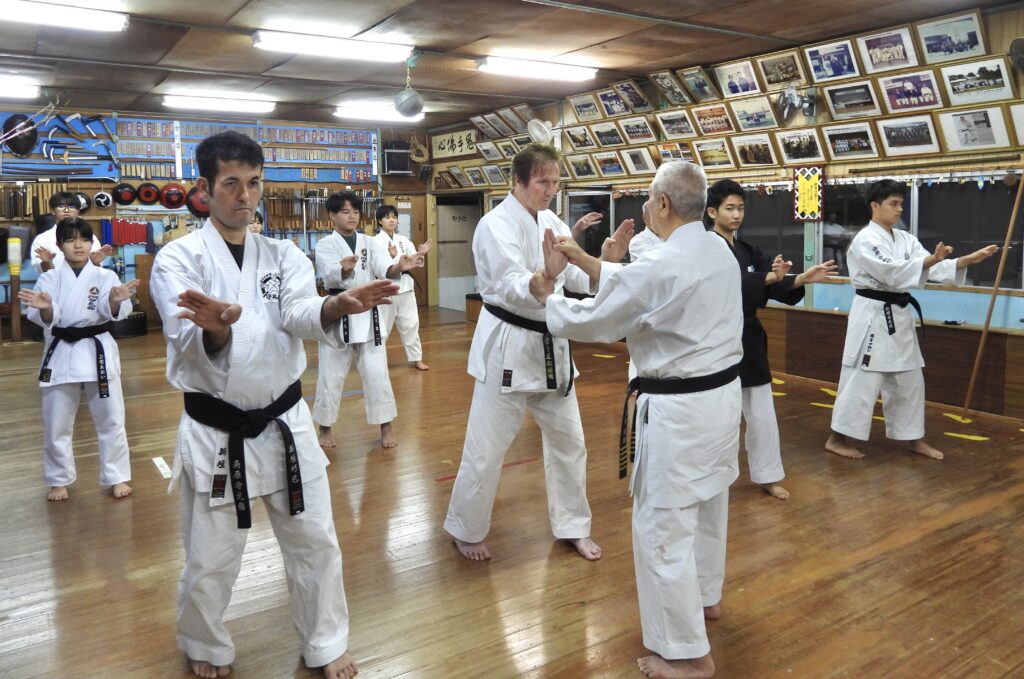
Instruction on Seichin’s Kata by Shimabukuro Sensei. Many students practice hard on weekday nights.

Daniel improving his “Kakushiken”.
(7-) What do you think about the globalization of Karate?
I’m very happy about it, but since it has become more of a competitive sport, there are many things that have been removed from the original Okinawan karate. When I was teaching in France a Kata tournament took place in the same gymnasium, next to us and I was surprised and wondered… “Is this karate too?” The common thought is that young Japanese Karate practitioners who were only 2nd or 3rd dan have taught abroad in the past. They spread their Karate, but if they had regularly learned from higher Dan Karate teachers in Okinawa, it would not have become what it is today.
I learned Kobudo from Matayoshi Shinpo Sensei (1921-1997) and Maeshiro Sensei. The Matayoshi family was a Samurai clan in the Ryukyu Kingdom, and after the Ryukyu Shobun of 1872 (Official Satsuma control), Shinpo Sensei’s grandfather moved to Senbaru 千原 in Chatan Village (now Kadena Town) with other Samurai clans.
“Shinbaru/Chimbaru 千原 no Sai” belongs to Kobujutsu (an ancient martial art) and has been passed down to this day, and some Karate forms are included in the “Senbaru Eisa” dance.
After World War II, Senbaru’s land became a US military base that was named “Kadena Air Base”. Many people, not only from Senbaru, lost their land and had to move somewhere else.
The martial arts of the Matayoshi family were passed down to Shinpo Sensei, but I believe that there are quite a few martial arts of the Ryukyu Samurai clan that were not able to be preserved for Isshisouden* and Mongaifushutu*.
I want Karate enthusiasts around the world to know Shinzui (the essence) of Okinawa Karate, including its history, and to spread it around the world.
Note*:
Isshisouden* 一子相伝: One-child inheritance.
A Master conveys his secrets, mysteries, or essence only to one-child (or one-disciple), and keeps it secret from the others.
Mongaifushutsu*門外不出 :
To hide very important skills, techniques, objects, etc. so that no one else knows about them and never let them out. It means not letting it go outside the gate (mon 門) of the house.
(8-) What do you think about Karate becoming a competitive sport, including the Olympics?
I am not an active supporter. Different Kata and Ryuha have their own characteristics, so I don’t think it is possible to judge and rank them as being better or worse? Tournaments should be made for each Ryuha.



Shimabukuro Sensei throwing Sai.
(9-) What does today’s Karate mean to you?
For Budo, the first step is to strengthen your inner self. As you train, you will also develop a sense of compassion for others. These values are very meaningful for me as an instructor researching to teach new methods.
Regarding teaching methods, I think that focusing on mental things such as Kiai, the theory of perseverance, doing your best, etc… is obsolete and not enough for the future.
I believe that Karate instructors need to study the body in order to teach in a safe, logical and well-reasoned manner.
I would love to share more about my knowledge of the body’s mechanisms with Daniel Sensei, who is an expert physiotherapist.
(10-) How do you envision the future of Karate?
I believe that competition will continue in the future…. Thus, Okinawa should take the lead and stop Ryuha’s organizational split and make a unification. The aim would be to create an environment where “traditional Kata” and “creative Kata” could co-exist in friendly competitions?
I hope that in 100 years, both sides will be respecting and applauding each other.
We should follow the example of Okinawa dances…! It has “classical dance,” “creative dance,” and “zo dance,” all of which coexist proudly and perform together at recitals.
(11-) Do you have any message for the world?
I would like the practitioners who love Okinawa’s Karate to deepen their interactions with the traditional Sensei, in order to repair the mistakes that have been taught in the past and to finally properly disseminate Okinawa’s Karate.
(12-) What does “Karate” mean to you?
Karate is a “Top quality” whetstone that sharpens your observation skills and refines your mind. Thanks to Karate, I changed myself and became a school teacher, which was my dream, and most importantly, I made many friends and it gave me huge assets. I would like to express my gratitude to our predecessors who left us Okinawa Karate. I want to continue to stand on the floor of my Dojo as long as my body can move.
Daniel’s conclusion:
Shimabukuro Sensei, thank you very much for this long and detailed interview. Through the many interviews I had the opportunity to realize with Okinawa Sensei, I have learned a lot and have a deeper understanding of not only the history, the techniques, and the philosophy, but also the state of Okinawa Karate in 2024. I can feel the strong presence and imprints of the Katsuren castle warriors of the past in this magic village…
I am very happy that Karate Sensei and students are realizing that there is a strong need for learning body care in order to practice more safely.
I sincerely hope that this will be the missing link that will allow to further increase the popularity of Okinawa Karate worldwide.

very neatly ranged Kobudo weapons.
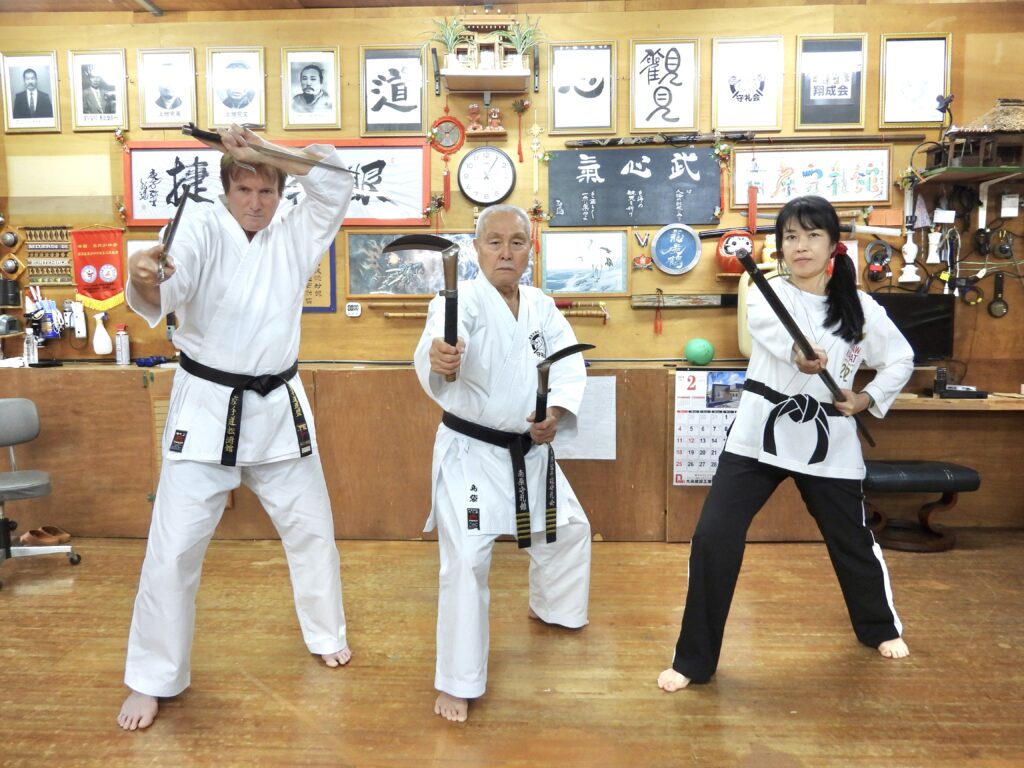
Experience Kobudo under the guidance of Shimabukuro Sensei. Kobudo stances: Daniel Sensei with Sai, Shimabukuro Sensei with Kama and Yuko Takahashi Sensei with Bo.

At the end of the very private Saturday family class with Shimabukuro Sensei’s 2 sons and 3 grand-daughters. 3 generations: Tsuneo Sensei, Atsushi Shihan (middle back), Takashi Shihan (left) and the grand-daughters Akino, Yuasa and Yuka.
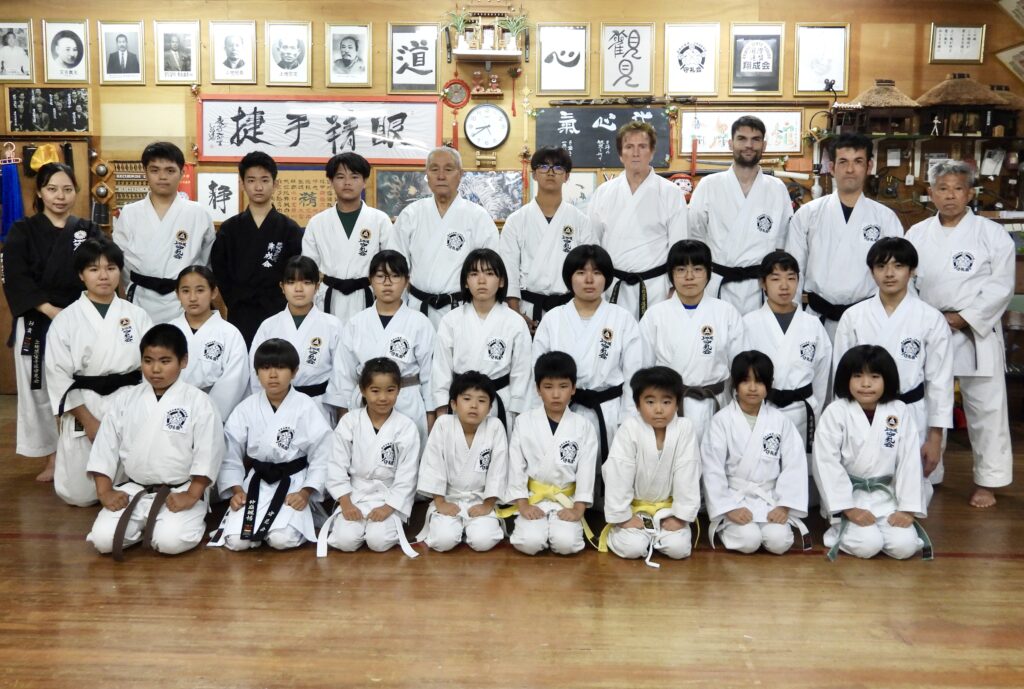
With the students of Minamihara Shureikan. Let’s strive for peace and study hard.
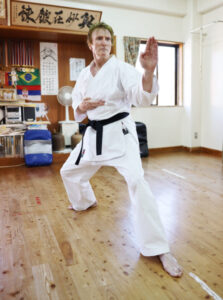
Daniel Mardon; the Karateka-Therapist
Creator of Aromapressure® method and physiotherapist with a valid US license, Daniel Mardon was born in Paris. One of his specialties is to teach and to perform lymphedema and subcutaneous tissue-damage care, after radiotherapy for cancer patients at medical institutions and subcutaneous tissue-circulation stimulation before and after surgery.
He was also a therapist for two famous soccer teams in Paris. Since 2005, he has focused on producing top-class hotel spas in Japan, as well as physiotherapy education and awareness-raising activities for health care professionals. Author of several books, among his major publications includes “The Physiology and Bodywork of Physical Therapy ” (Published by BAB Japan) and DVD “Daniel Mardon Aromapressure® Method ” (Pony Canyon). He regularly appears on television and radio shows, and has featured in numerous media publications.

